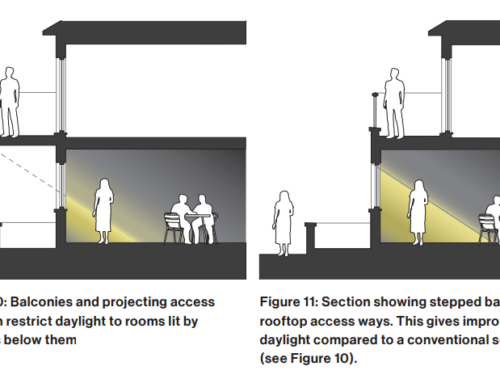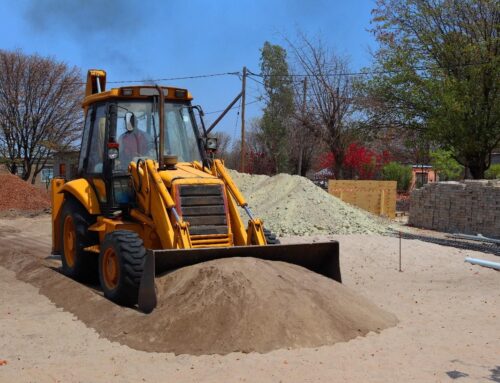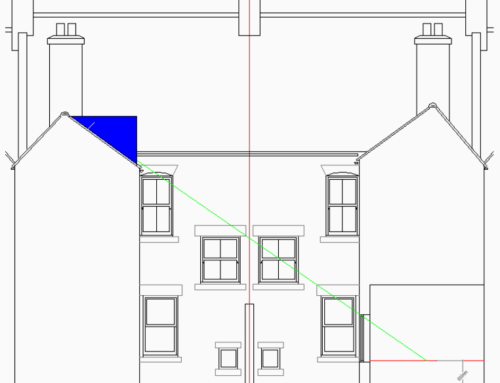Background to Section 203 Powers
Section 203 of the Housing and Planning Act (S.203) replaced Section 237 of the Town and Country Planning Act 1990 (S.237). The powers contained within S.203 are not significantly different from S.237 with the main difference being the extension of these powers beyond just Local Authorities and regeneration agencies to include a wider range of acquiring authorities.
Firstly, before proceeding further, it must be noted that this is complex area of law. ‘Standard’ right of light is regarded as specialist but the matter of the use of S.203 with regards to legal rights of light is even more specialist, with very few lawyers or surveyors having extensive experience of this.
With that in mind, it must be noted that we are Right to Light Surveyors; we are not Lawyers, and so the intention of this article is to not to explore the minutiae of the legal details associated with the use and constraints of these powers but rather to give a more general overview from a Surveyor’s perspective, concentrating on the implications for neighbours and developers.
Effects of S.203 Powers in Use
With regards to rights of light, the effect of the use of S.203 is to override a neighbour’s normal rights to potentially seek an injunction or to robustly negotiate compensation in lieu of an injunction.
The S.203 Legal Process in Brief
For an authority to be able to use S.203 powers, as part of this process, they must acquire or appropriate the land for planning purposes. In this regard, there is much legal detail which is highly complicated (and seemingly not wholly clear even to the most expert legal minds) and which I do not intend to explore here.
The legal requirements to be demonstrated to justify the acquisition or appropriation of land and the use of S.203 powers are as follows:
- The proposed development is of sufficient regeneration, environmental, social and/or economic benefit to the wider society and local economy such that individual’s normal rights can be justifiably removed to ensure that the project can progress
- That the progression of the development is genuinely threatened by the risk of a neighbour seeking an injunction to prevent the scheme from being implemented
Intended Limitations on the Use of S.203
The Government guidance within the document ‘Guidance on Compulsory Purchase Process’ includes a principle that authorities should attempt to reach a negotiated settlement for land or rights in advance of the use of compulsory purchase powers. Generally, expert legal opinion, including opinions of Judges in Court, is that all reasonable efforts must have been shown to have been made to try to agree compensation with neighbours for any legal right of light injuries in advance of the use of these powers. Expert legal opinion seems to be that an authority would be justified in using S.203 powers if a neighbour were threatening an injunction but otherwise that these powers should not be used if the matter could be settled by the payment of a normal amount of compensation in lieu of an injunction.
Thus, the conclusion on this basis is that the acquisition or appropriation of land and the use of S.203 powers should only be used as a last resort.
In the case of R v Leeds City Council (1997), the Judge’s opinion of an appropriate approach to be taken by the Local Authority as to whether to use S.237 powers (as above this pre-dated the current S.203) included the following wording: “It seems to me that, at least in a case where third parties are known to have rights, an authority cannot properly embark upon such a course unless it has good reason to believe that interference with such rights is necessary.”
Compensation under S.203 Powers
Whereas normal commercial consideration of compensation in relation to rights of light matters does not take any account of any betterment (and thus an increase in property values) as a result of the development, this is not the case for consideration of compensation as an ‘injurious affection’ under S.203 powers.
The exercising of the S.203 powers does not fully remove the right for injuriously affected neighbours to obtain compensation but the ability to commercially negotiate compensation in lieu of an injunction is removed and thus the compensation can only be compensation for loss without any enhancement. Compensation is paid to injuriously-affected neighbours under Section 204(2) of the same Act, which states that it must be calculated on the same basis as that used under sections 7 and 10 of the Compulsory Purchase Act.
Calculation of diminution in value due to loss of light as an injurious affection is very different from the normal approach used by right of light surveyors which is to calculate what is known as ‘book value’. In brief, book value monetises the area of a room which becomes inadequately lit by daylight as a consequence of the development/obstruction; this approach takes no account of any betterment from the new development and makes no reference to ‘before and after’ comparative valuations.
In comparison, the consideration of compensation for diminution in value for an injurious affection values this loss solely on a comparative valuation basis whereby a valuer would make an assessment of the variation in the value of a property taking into account the loss of light but also with this potentially offset (to at least some extent) by any increase in the value from the benefit to the area of the new development. By this approach, on occasions, it is possible that it could be considered that there is no overall loss of value due to the reduction in natural light if the enhancement of the value from the neighbouring new development is sufficient.
In practice, this is complicated, imprecise and difficult to achieve with any degree of accuracy or certainty. As a consequence, in practice, even in S.203 situations, Right to Light Surveyors generally revert to agreeing compensation based on book value. If so, this means that the compensation would be the diminution in value calculated in line with the standard industry methodology, without any offset for any increase in property values as a result of the development. This will probably often (but not necessarily always) give a compensation figure above that calculated as injurious affection but still with the compensation much lower than would normally be expected for a commercial negotiation of compensation, especially if there were a genuine likelihood of an injunction being granted by a court.
Conclusions
From the developer’s point of view, persuading the Council to use their S.203 powers has very significant benefits, enabling them to proceed with the development causing legal right of light injuries to neighbours with no risk of an injunction and with significant savings of compensation payable to affected neighbours.
Conversely, of course, for neighbours, this is bad news, removing the right to an injunction and very greatly limiting compensation to, at best, compensation only for the diminution in value with no uplift and no ability to commercially negotiate this.
The Council should not use these powers without very good reason but the reality is that it is very difficult to challenge the use of these powers if an Authority decides to do so.
If you are a developer or neighbour in a situation where the use of S.203 powers may be relevant, Smith Marston can assist with regards to the Right of Light Surveyor aspects of this, simply contact our team today to speak with us or discuss a right to light assessment.
Related Articles
Rights of Light – Beware of the Side Extension
Will Trees Affect My Right to Light?
Is There A Legal Right To Sunlight To Windows Or My Garden?
What Is A Light Obstruction Notice And When Might It Be Used?






